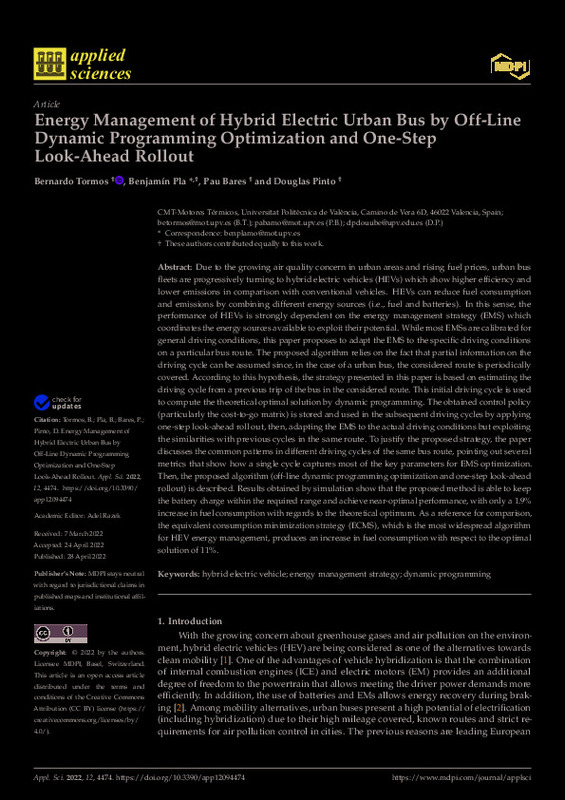JavaScript is disabled for your browser. Some features of this site may not work without it.
Buscar en RiuNet
Listar
Mi cuenta
Estadísticas
Ayuda RiuNet
Admin. UPV
Energy Management of Hybrid Electric Urban Bus by Off-Line Dynamic Programming Optimization and One-Step Look-Ahead Rollout
Mostrar el registro completo del ítem
Tormos, B.; Pla Moreno, B.; Bares-Moreno, P.; Pinto, D. (2022). Energy Management of Hybrid Electric Urban Bus by Off-Line Dynamic Programming Optimization and One-Step Look-Ahead Rollout. Applied Sciences. 12(9):1-19. https://doi.org/10.3390/app12094474
Por favor, use este identificador para citar o enlazar este ítem: http://hdl.handle.net/10251/194167
Ficheros en el ítem
Metadatos del ítem
| Título: | Energy Management of Hybrid Electric Urban Bus by Off-Line Dynamic Programming Optimization and One-Step Look-Ahead Rollout | |
| Autor: | ||
| Entidad UPV: |
|
|
| Fecha difusión: |
|
|
| Resumen: |
[EN] Due to the growing air quality concern in urban areas and rising fuel prices, urban bus fleets are progressively turning to hybrid electric vehicles (HEVs) which show higher efficiency and lower emissions in comparison ...[+]
|
|
| Palabras clave: |
|
|
| Derechos de uso: | Reconocimiento (by) | |
| Fuente: |
|
|
| DOI: |
|
|
| Editorial: |
|
|
| Versión del editor: | https://doi.org/10.3390/app12094474 | |
| Código del Proyecto: |
|
|
| Agradecimientos: |
|
|
| Tipo: |
|









